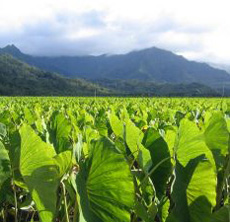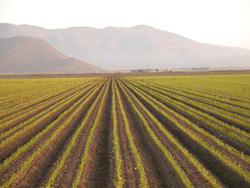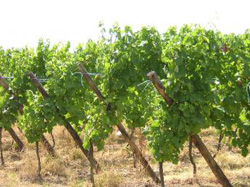Composting is important on most organic farms; it is vital to the success of a biodynamic operation. Composting, building up and enriching soil via natural means, is part of the perfectly reasonable logic that humans have wreaked havoc upon the planet’s natural resources, not least, our soil. Biodynamics carries matters a step further. The BDA appears to regard organic agriculture, at least in the U.S., as a well-meaning but weak and excessively limited practice, one that has strayed from its foundations. To quote from the BDA’s website: “Organic agriculture rightly wants to halt the devastation caused by humans; however, organic agriculture has no cure for the ailing Earth.” The BDA believes that biodynamics does have a cure for “the ailing Earth.” This cure comes in the form of “medicines,” prepared by biodynamics practitioners from both plant and animal materials, combined according to strict formulations during particular times of the year. These preparations are then buried in compost piles for set amounts of time, which, the BDA states, organizes “the chaotic elements within the compost piles.” When done, these “medicines” benefit the Earth by drawing “new life forces from the cosmos.” An example is a preparation of chamomile blossoms, which is stuffed into cattle intestines, buried in the fall, and dug up again in the spring. Self-containment is not necessarily a principle of organic farming, but a self-contained farm is put forth as an ideal in the biodynamics system. This sounds wonderful, but I question the practicality of such an ideal. It is extraordinarily difficult for any farm operation to function as a self-contained unit. The Demeter Association, whose American branch is the sole biodynamic certifier in the U.S., correctly declares that importation of materials onto a farm “reintroduces some of the same set of problems that conventional agriculture presents, namely dependence on the earth’s natural resources to transport, mine, and refine a myriad of materials.” But to insist that this can be avoided entirely through sufficient time and “foresight in developing the right farming system” strikes me as being too narrow-minded. I don’t know that an agricultural operation, especially one just starting out as organic or biodynamic, can be expected to have a full grasp of all materials that will be necessary for self-containment five or ten years down the road.
Organics & Biodynamics: Are There Common Grounds?So far, there don’t seem to be profound similarities between organics and biodynamics. But there is one area in which both, sadly, are in complete accord: politics. I have spoken out in prior columns against the USDA, the agency charged with developing organic regulations in the United States; if you do not wish to read more complaints against them here, click out of this article now. True-blue, diehard producers of organics in the U.S. are seeing their hard work undercut by this government agency, which has repeatedly and shamelessly caved in to pressure from big agribusiness. U.S. organic standards are too insubstantial, often vague, and too favorable to mass producers not willing to invest the time or money necessary to bring the consumer a genuinely organic product. Even now, politics is threatening to erode more of the USDA standards. Alas, biodynamics is not exempt from politics or accompanying quarrels. I’ve mentioned the Demeter Association as the sole biodynamic certifying agency in the US. Demeter, an international assembly of country-specific organizations, is by far the largest biodynamic certifier in the world. Jim Fullmer, of Demeter USA, sent this in an e-mail: “Demeter is the only Biodynamic certifier worldwide. Folks often get confused by this as there are so many organic certifiers in the US for instance but only one Biodynamic certifier.” This is a remarkable statement, as it possesses the unique quality of being both true and not true simultaneously. There is at least one rival biodynamic certifier, Biodivin, who concern themselves solely with vineyards. You won’t see any vineyard in the U.S. certified by Biodivin, however. Demeter has trademarked the word “biodynamic” in this country, so they’re the only ones who can use that term. Demeter does not recognize Biodivin or any other rival group; presumably, the reverse may be true, as well, although I haven’t been able to find a web presence for any other certifier. I have read that, in some areas of the world, especially the Alsace region of France, bickering between Demeter and Biodivin is threatening the progress of the biodynamics movement. And, as is the case with organics, different producers claim that biodynamics standards are too dilute, or, alternatively, too strict.
At least in this country, biodynamic foods are unlikely to see the same degree of popularity (and subsequent controversy) on an immediate basis, for two reasons. First off, there aren’t enough of them. Biodynamic food production in the U.S. is extremely limited at present, and the greatest number of adherents are almost certainly vintners. But more importantly for me, the ideas behind biodynamics lack modern scientific validity. This has to be very difficult for practitioners, given the spirituality and awareness of natural cycles involved; how does one measure the success of such things in a scientific manner? Biodynamics practitioners point to the number of gold medals their wines have won in taste-tests over recent years, but taste is such a subjective matter that I don’t regard gold medals as scientific evidence of superiority. Then too, even if all other problems in the realm of biodynamics had been solved, the practice faces an image problem. Some people see practitioners as members of a cult or religion, and some regard them as freaks. None of that is accurate or just. Biodynamic farms, by their nature, are also organic (in fact, a number of vineyards I found are certified organic and claim to practice biodynamic agriculture, but are not certified biodynamic). So it’s possible that organic farming in and of itself will allow soil to “heal” and even improve upon itself. And for all I know, an astral component and some of those fermented chamomile blossoms help the process along. Both organic and biodynamic farming have been viewed (or are currently eyed) with deep suspicion, as they represent a change from convention. But the goals of both are lofty and noble. My suggestion? Give organic and biodynamic products a try, and see if either system turns out a better product for you. Organic Finds Of The Month: WineriesBecause the most readily-available biodynamic products in the U.S. are wines, I offer this month a few wineries with varying outlooks on organic vs. biodynamic agriculture. They are listed in alphabetic order, and I haven’t tried any of these wines.
Recent Articles From Our NutriNibbles™ News Feed:Subscribing notifies you whenever
there are
|

The Nibble Blog
The Latest Products, Recipes & Trends In Specialty Foods
The gourmet guide you’ve been waiting for. New food adventures are served up daily. Check it out!

Food Glossary
Our Food Directories Are "Crash Courses" In Tasty Topics
Your ultimate food lover’s dictionary packed full of information and historical references. Take a look!

Food History
Let the journey begin!
Learn about the history Of 1,000+ Favorite Foods & Beverages Let’s explore the history of your favorie goods together.Let the journey begin!




 In a perfect world, both organic and biodynamic agriculture would emphasize quantity instead of quality. But one has to wonder in the case of some organic foods, with huge players such as McDonald’s and Wal-Mart angling for a piece of the enormous economic pie organics represent. Can a megacorporation really be trusted to care enough about the environment and people to insist that organic principles be followed in food production methods? And what happens to the standards of their producer(s), who must meet huge demand on a daily basis?
In a perfect world, both organic and biodynamic agriculture would emphasize quantity instead of quality. But one has to wonder in the case of some organic foods, with huge players such as McDonald’s and Wal-Mart angling for a piece of the enormous economic pie organics represent. Can a megacorporation really be trusted to care enough about the environment and people to insist that organic principles be followed in food production methods? And what happens to the standards of their producer(s), who must meet huge demand on a daily basis? 